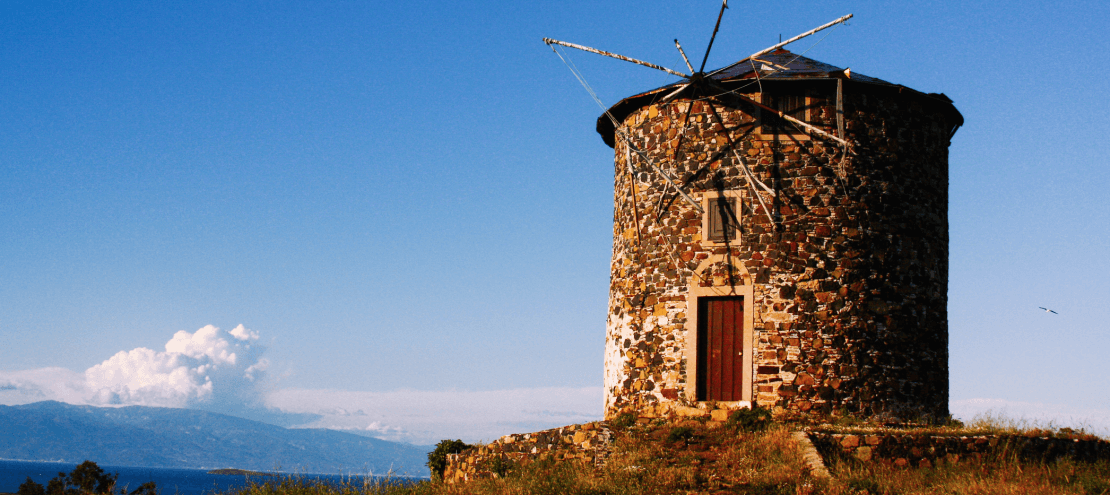
We have a client who has set out to make lead recycling fundamentally non-polluting. To highlight how ready this industry is for change, he likes to point out that Attila the Hun would recognize the current method for recycling lead (smelting, a really really really polluting process). Indeed, Attila probably would have encountered lead smelting while wreaking havoc on the lead-loving Romans.
Attila and his forces spent a lot of time knocking on the door of Rome, an empire that at the time included much of Greece, Gaul and Italy. From 434 to 453 CE, Hun armies relentlessly battered Roman cities.
While Attila, the “Scourge of God,” was busy trying to claim most of Western Europe, he probably encountered several other early incarnations of modern-day clean technologies.
Wind power is one.
In ancient Greece, the Alexandrian inventor Hero built a wind-powered motor to produce air pressure for an organ. Buddhists in central Asia in the 5th Century built wind- and water-driven prayer wheels. In 7th-century Persia, windmills were used to irrigate crops and grind grain. It’s estimated that these early windmills could generate half the power of a small car.
Today, according to the Wind Energy Foundation, about four percent of America’s electricity comes from wind power. Worldwide, there are about 318,000 MW of installed wind power. These towering propellers do much more than grind grains or help irrigate crops, however. Recently, Texas reported a major wind record when 40 percent of the state’s energy came from wind power for 17 days straight.
After a long day of fighting the Huns, a fifth century Roman soldier might retire to a bathhouse to take advantage of another kind of thermal energy – solar power.
The Greeks used acrylic tiles to capture the heat of the sun, which then radiated into rooms. The Romans took it a step further. They used giant windows to supplement the heat from fires under their bathhouses, keeping their ancient jacuzzis at a toasty 120 degrees Fahrenheit.
We’ve since developed a range of technologies to collect, use and store large-scale solar energy. The Solar Energy Industries Association reports that as of this year, there are 32 GW of installed solar capacity in the United States. This is enough to power almost five percent of American households on solar alone. With storage options proliferating and solar panel prices dropping by nearly seven percent per year, the future of clean energy looks sunny, indeed.
After the Roman Empire fell, partly thanks to the efforts of Attila and friends, Europe was plunged into the Dark Ages – which weren’t actually all that dark. During this relatively peaceful period of human history, the Persians gave us the Holy Grail of modern day computer programming – the algorithm.
The algorithm is the building block of every bit of code – it’s how the computer translates our language into its own. Almost all modern-day energy sources have the algorithm to thank for something. From the engineers modeling new solar-to-wind installations to the humble monitoring system at a power plant, computers drive the energy industry.
We’ve come a long way since Attila, but the roots of many modern marvels are, well, barbaric.